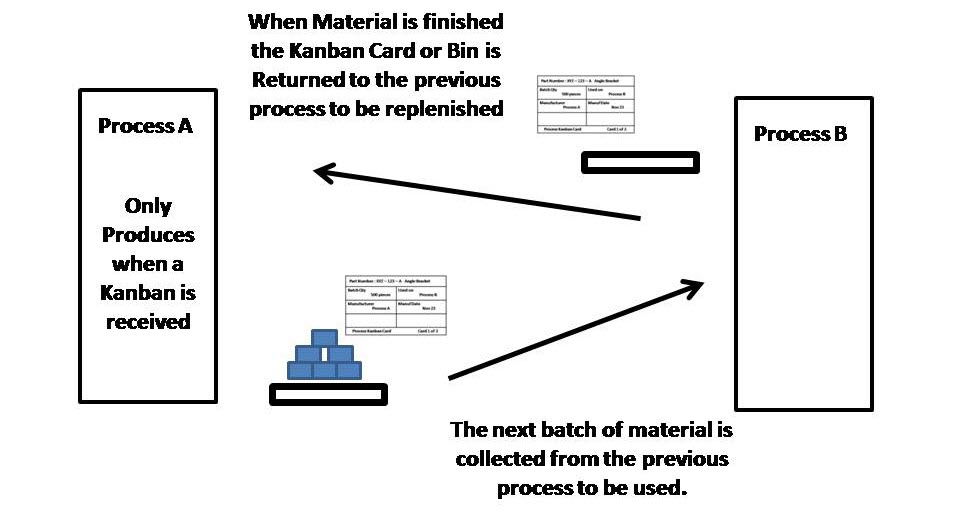A Kanban production control system is a visual system used to control production as a part of Lean Manufacturing or Just in Time (JIT). Being part of pull system, it can manage to control what to produce, how much to produce, and when to produce it. The aim of the Kanban production control system is to make sure that it only produces exactly what customer wants, not more or less. Kanban relies on signals that are used by the value steam to pull the products from customer demand all the way through the supply chain from the raw materials.
Essentially, Kanban is a visual signal and translates to card you can see. Its signal notifies the previous process that more materials or parts are needed. Kanban may have various forms, however, mostly under the facilities of production they utilize Kanban bins or cards to manage the processes. But there is no limitation to how and where to develop and implement a Kanban production control system.
Push Production vs. Pull Production
The major task of JIT is to pull the production based on the customers need. The perfect flow is manufacturing a single component as required; however, it may not always be applicable to various processes without certain redesigning.
The traditional production processes operate based on a set schedule, raw materials are ordered and manufactured to build parts based on prediction on what customers are expected to place order on. It is called push production which mainly is driven by materials being ordered into the begin the process. All procedures controlled by scheduling or MRP (material requirements planning). This develops the products in bulk amount and ties up a large quantity of company capital in stock and work in progress.
However, pull production operates in contrast, where the customer requests a product at the end stage of the production process, the Kanban production control system then signal back, to begin with producing the part.
Regulations and Practices of a Kanban Production Control System
The Kanban process follows numerous regulations and practices to manage and keep improving the workflow. It is an evolutionary, uninterrupted process that gradually brings improvements to the company’s processes. If these regulations and practices are followed correctly, it will optimize the use of Kanban to get maximum benefits such as improvement of process flow, minimize cycle time, boost value for customers, along with more accurate predictability.
How Kanban Pull Production Work
In the simplest form, a Kanban production control system is only a signal which is sent back to start operations for the production of parts. Therefore, for the simple processes that have single part flow will operate as diagram shown above in the beginning of this article.
Surely the production is barely as simple as this diagram. Numerous processes are not able to manufacture single product on right time economically and quickly enough. It may also have large production lines developing multiple products for customers. However, whatever system is used, the following are rules of Kanban that must be followed:
Rules of a Kanban Production Control System
- The earlier processes provide the data to later processes.
- The later processes update the earlier processes to inform what’s required to produce next.
- Earlier processes only generate what later processes need.
- No any product is produced or moved without permission of Kanban.
- No chance of passing defects for later processes.
The Reason for Implementing a Kanban System
- Earlier processes don’t push production to later processes.
- Without Kanban, nothing could be made.
- It is possible to identify defects as close to the source as possible.
- It cannot be operated with larger batches or lots.
Following Are the Ideal Conditions Needed for Kanban
- Regular demand from the customer.
- Low product variation.
- Small dedicated machines.
- Quick changeovers.
- Repeatable and reliable processes.
- Reliable suppliers.
If these conditions are not met, it does not mean that Kanban and JIT cannot be implemented. But it means that it might be required to add little more thoughts into how systems, designs, and how they will work. Irregularities in demands and high variations in products, for instance, may require using CONWIP systems rather than often seen cards and bin system.






